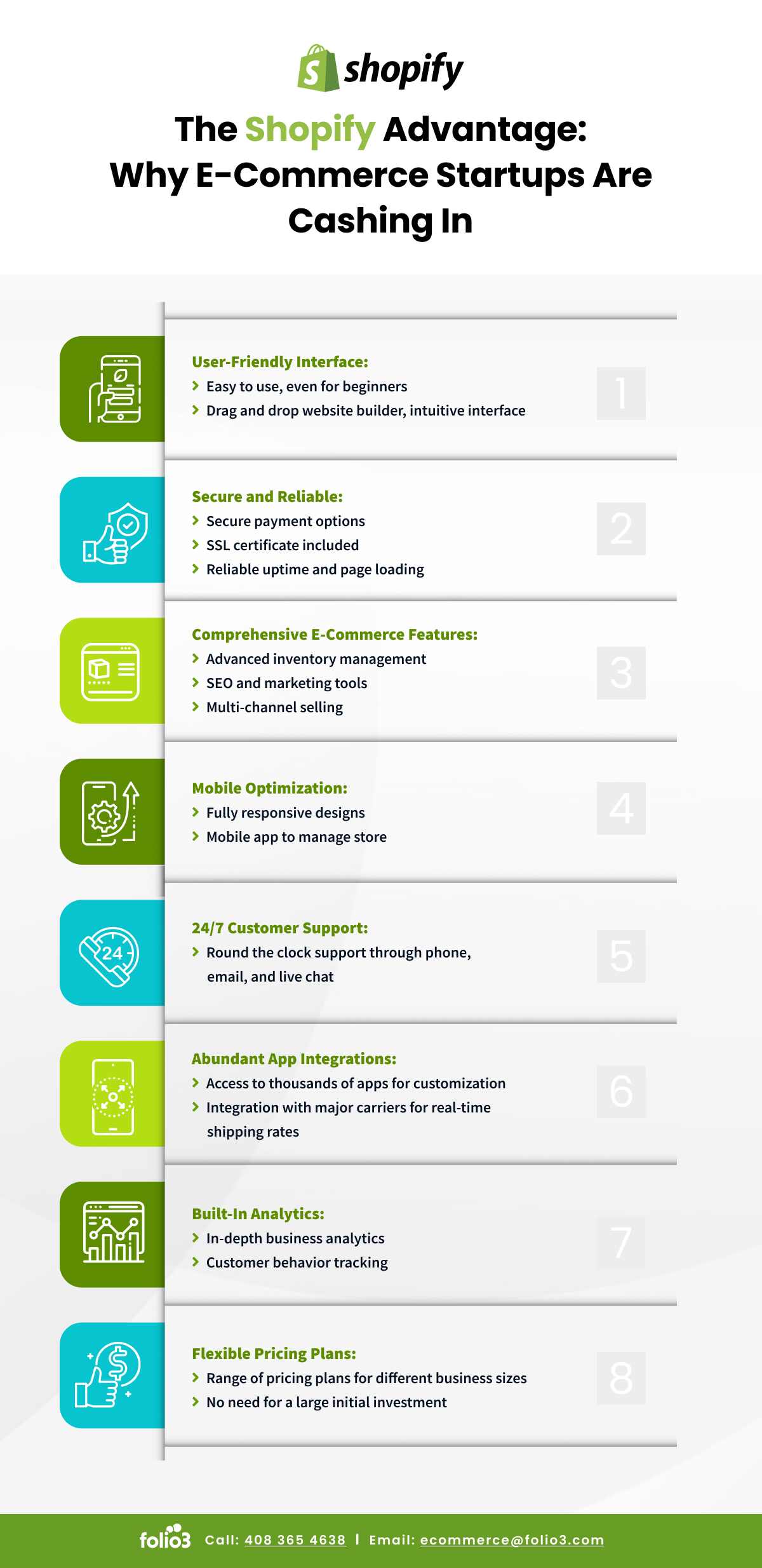How to Increase Average Shopify Store Revenue in 2024
Last Updated | July 25, 2024
Table of Contents
Shopify emerges as a powerful platform for aspiring entrepreneurs. However, navigating the financial realities of this venture presents a crucial challenge.
The journey towards eCommerce excellence depends on a clear understanding of its financial realities. Ups and downs are an integral part of every business; the same goes for Shopify. Yet, the average Shopify store revenue figures and associated factors serve as the roadmap.
By equipping you with this knowledge, this exploration empowers you to develop effective strategies to maximize your earning potential on Shopify.
Shopify’s Competitive Advantage
The e-commerce landscape has undergone a dramatic transformation, with Shopify emerging as a dominant player. Its ability to empower businesses of all sizes to establish and manage online stores with minimal technical expertise has been a key driver of its success.
Compared to traditional e-commerce platforms, Shopify offers several key advantages:
- Ease of use: Shopify’s intuitive interface and user-friendly design make it accessible to merchants with limited technical knowledge.
- Scalability: The platform can accommodate businesses of all sizes, from startups to large enterprises.
- App ecosystem: Shopify’s vast app marketplace provides endless opportunities to customize and expand store functionality.
- Payment processing: Built-in payment processing simplifies transactions and reduces fees.
- Marketing tools: Shopify offers a suite of marketing tools to help businesses reach their target audience.
How Much Can You Make With Shopify?
The question of potential income is a constant for any entrepreneur venturing into the world of eCommerce with Shopify. While various factors affect quantifying earnings, this discourse explains the insights of average revenue Shopify store, its profit margins, and approaches to estimating customer base requirements for achieving target profit goals.
Average Revenue Insights
While pinpointing a singular, definitive average revenue for all Shopify stores is impossible due to diverse product offerings, pricing strategies, and market landscapes, industry reports offer valuable benchmarks.
The average Shopify store revenue per month globally stands at USD 5,583. Business owners must remember that the individual stores may experience higher or lower revenue depending on their circumstances.
Profit Margins: A Closer Look
Another prominent factor that affects revenue generation is profit margin. After accounting for all expenses, this revenue percentage remains critical in efficiently determining earnings.
The average net profit margin for Shopify stores is estimated to be around 10%, with high performers reaching up to 20% and low performers hovering around 5%.
Calculating Required Customer Numbers for Target Profit Margins
To estimate the number of customers needed to achieve your target profit margin, consider the following formula:
Target Profit / (Average Order Value * Average Profit Margin) = Required Number of Customers
For instance, if you aim for a monthly profit of $10,000 with an average order value of $50 and a target profit margin of 10%, you would require:
$10,000 / ($50 * 0.1) = 200 customers
Remember, this is a simplified calculation. Various factors, such as marketing costs, customer acquisition costs, and variable expenses, are necessary for a comprehensive understanding.
Analyzing Average Monthly Shopify Store Revenue
While the average Shopify store revenue provides a general benchmark, a more nuanced understanding requires examining revenue distribution across various segments.
Revenue by Industry:
- High-ticket items: Industries such as electronics, luxury goods, and home furnishings often exhibit higher average revenue per order.
- High-volume, low-ticket items: Niches like apparel, accessories, and consumer goods typically generate revenue through higher sales volumes.
- Subscription-based models: Industries offering recurring revenue streams, such as beauty boxes or meal kits, have distinct revenue patterns.
Revenue by Store Size:
- Small stores: Often characterized by lower average order values and customer lifetime values.
- Medium-sized stores: Typically demonstrate a balance between customer acquisition and retention.
- Large enterprises: Benefit from economies of scale and often achieve higher average order values.
Additional Factors:
- Geographic location: Economic conditions, purchasing power, and consumer behavior vary across regions.
- Business model: Dropshipping, print-on-demand, and wholesale models have different revenue implications.
- Marketing spend: Investment in advertising and promotions can significantly impact revenue.
The Shopify Advantage – Why eCommerce Startups are Cashing
Top-Performing Stores vs. Average Stores
Even though the average monthly revenue for Shopify stores serves as a starting point, a significant disparity exists between top-performing stores and average stores.
As per states, the top 1% of Shopify stores generate a staggering 80% of the platform’s total revenue. This highlights the need to increase the “average” and implement strategic growth-oriented initiatives to capture a larger market share.
Revenue Distribution Across Different Niches
The respective niche of the store impacts the revenue potential in the long run. Certain niches, such as electronics, fashion, and cosmetics, generate higher average revenue. Thanks to their higher product values and larger customer bases.
Conversely, stores catering to specific customer segments may experience lower average revenue figures but potentially higher profit margins due to specialized products and reduced competition.
The Role of Subscription Models in Revenue Generation
An alternative revenue generation strategy for stores is known as the “Subscription model”. This model offers customers recurring subscriptions to products or services, often at discounted rates compared to individual purchases.
What makes it beneficial is that even with low revenue generation from average monthly revenue, the recurring nature of this model can lead to predictable and sustainable income over time.
Key Factors Contributing to Shopify Store Success
Creating a successful Shopify demands several blocks to come together and fit perfectly to captivate customers. Four major elements contribute to its success. In other words, it affects the average Shopify store revenue.
1. Effective Marketing Strategies
Effective marketing strategies such as leveraging social media, search engine optimization (SEO), and email campaigns stand high in this regard. Tailoring these tools to your store’s niche turns visitors into loyal customers.
2. High-Quality Product Offerings
The caliber of its product offerings is equally vital to a store’s success. A store featuring products that satisfy customer needs inspires excitement. High-quality goods that deliver on their promises encourage positive reviews and word-of-mouth referrals. Hence, leading to long-term success.
3. User-Friendly Store Design and Navigation
No matter how fine the product is, it can still be overlooked if presented on a challenging platform. Customers should feel guided through the shopping experience, from discovery to checkout, with ease and efficiency. This simplicity enhances the overall shopping experience. Plus, it increases the likelihood of repeat business.
4. Excellent Customer Service and Support
Finally, excellent customer service and support are the backbone of any successful Shopify store. In an era where everything is instantaneous, customers expect quick, empathetic, and efficient responses to their inquiries and issues. Going above and beyond in offering solutions often turns a potentially negative experience into a positive one.
How to Increase Your Shopify Store’s Monthly Revenue
Predicting the average Shopify store revenue increase per year is possible only if entrepreneurs put in the effort every month with these strategies.
1. Implementing Data-Driven Marketing Techniques
Data-driven marketing techniques help you pinpoint precisely what your customers desire, how they interact with your store, and what marketing channels yield the highest ROI.
By utilizing the tools that analyze customer behavior and preferences, you can rest assured knowing that your advertising messages will reach the right audience at the right time with the right message.
2. Optimizing Your Store for Conversions
Simple tweaks, such as enhancing your site’s speed and making navigation intuitive, fall under this category. Implementing high-converting product pages also significantly impacts your conversion rates.
Additionally, incorporating clear calls-to-action (CTAs) and optimizing check-out processes further lead the path to purchase.
3. Expanding Your Product Line and Target Audience
Expanding your product line and targeting a broader audience are pivotal growth strategies. Here, market research holds massive importance. It will help you identify potential new products that align with your brand and target audience.
Similarly, understanding different market segments enables you to tailor your marketing and product development efforts to appeal to a broader audience without underestimating your brand identity.
Utilizing Shopify Apps and Integrations
There is no second opinion that Shopify apps and integrations set the stage for your store’s functionality and customer experience. Whether it’s about cross-selling or cross-selling app apps, it is the right tool to impact the store positively in numerous ways.
Conclusion
Average Shopify store revenue highly depends on these factors. ECommerce businesses willing to excel should look into them while setting up an online store.
- Specific industries and niches influence revenue potential. Some high-demand markets offer potentially higher revenue but require stronger competition strategies.
- High-quality products and well-defined pricing strategies considering costs, competition, and market value maximize profit margins.
- A strong brand identity and implementation of effective marketing campaigns drive traffic, increase brand awareness, and ultimately impact revenue.
- Exceptional customer service, a user-friendly website, and efficient order fulfillment lead to customer satisfaction and continuous conversion rates.
- Optimizing inventory management, minimizing fulfillment costs, and leveraging data analytics drive efficiency while reliable logistics partners.
FAQs
What is Shopify’s store revenue checker?
As the name suggests, the revenue checker is defined as a tool to determine and calculate revenues. There are different tools available in the market and all of them help determine the sales of the store. You can use the Shopify eCommerce online store integration services to keep an eye on the revenue and other details.
How to calculate Shopify’s average revenue per user?
The average revenue per user is calculated by dividing the monthly revenue of the store by the number of customers who were transacted in a month.
How to calculate Shopify’s average revenue per merchant?
The average revenue per merchant is calculated by adding the total dollar value of the orders from different channels and apps. In addition, it calculates the refunds net, handling fee, shipping fee, value-added taxes, and duty.
Is starting a Shopify store worth it?
Yes, Shopify is undoubtedly worth it because it can boost business sales. However, gaining profits depends on business strategies and marketing. In addition, you must create a functional store, and for this purpose, you can opt for Shopify app development by Folio3 or Shopify eCommerce web store development or even for Shopify migration services.









